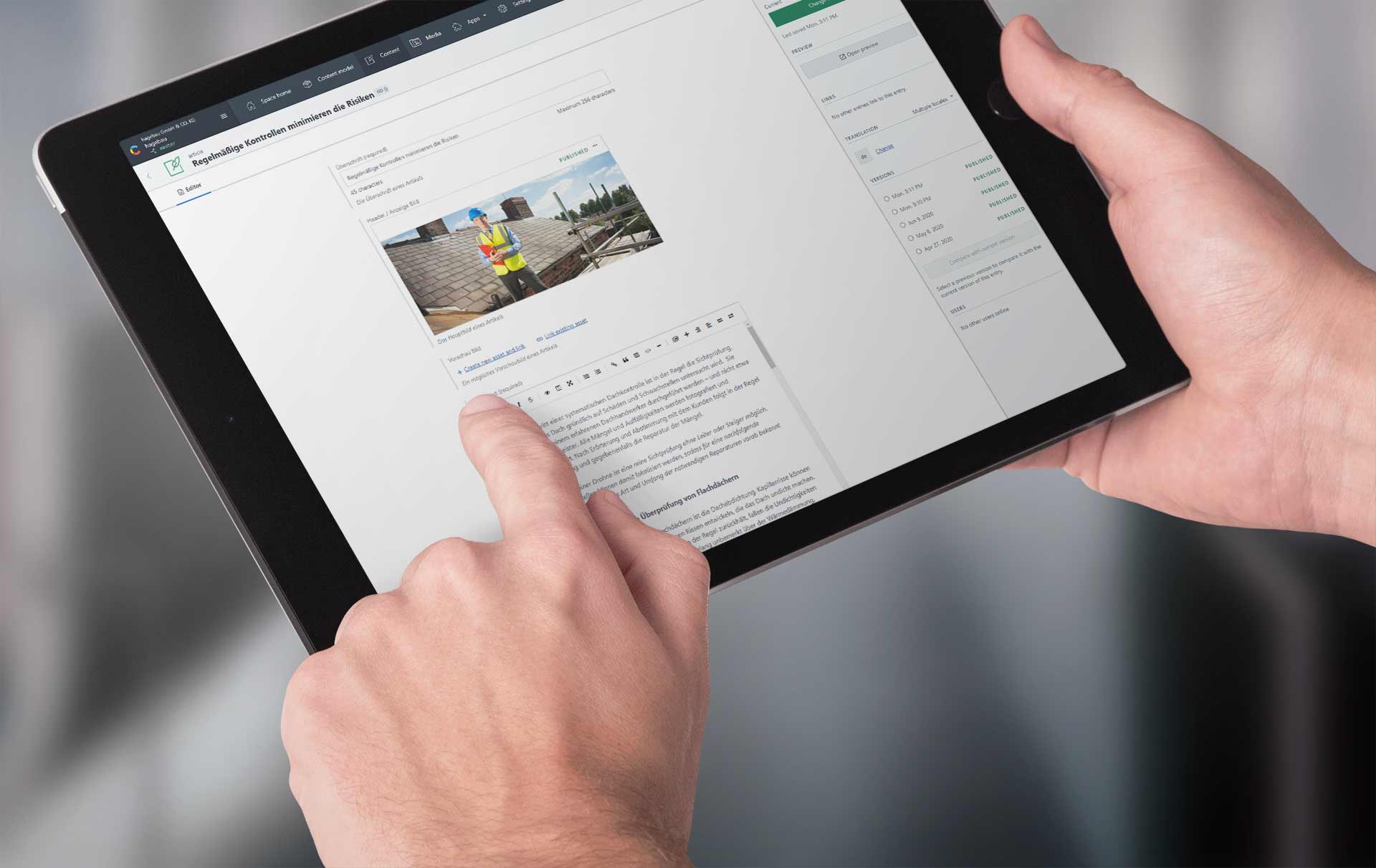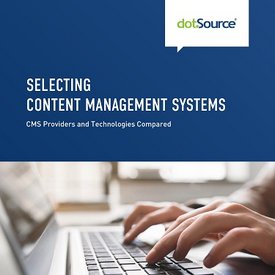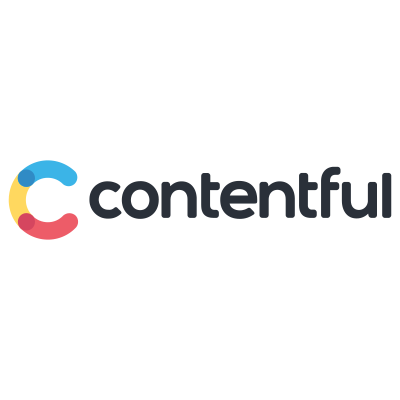
Headless CMS Integration with dotSource
Switching to a headless CMS is worthwhile for many companies, but it should be well planned and professionally overseen. As a renowned e-commerce agency, we have a lot of experience in the fields of digitalisation, development and content marketing. Do you want to integrate a headless CMS into your business model? Our experts are happy to provide advice on what options might be best for you, where undiscovered potential lies and how you can ensure success in the future.
What Is a Headless CMS? (Definition)
A headless CMS is a back-end content management system, also known as an API-first CMS. Since it does not have a front end (head) and comes with a modular structure, it excels in terms of high efficiency and scalability.
A vital difference from conventional systems: headless systems are universal content databases (content repositories) and highly compatible. Using APIs, content can be provided quickly and securely.
Regardless of the programming language, front end and device – content in headless CMS is structured in such a way that it can be applied to every template. For this reason, headless CMS are the best option for companies that conduct omnichannel marketing.
Which CMS Do You Need?

In our »Selecting Content Management Systems« white paper, we comprehensively examine CMS types and trends as well as compare all relevant vendors on the market – not only headless but also traditional.
Download the white paper for free now
Smart CMS Are Headless & Powerful
Those who use headless CMS are well prepared for the rising demands in content management and marketing, with user expectations and needs becoming increasingly multi-faceted and challenging. Moreover, new devices are constantly being added.
Therefore, companies are dependent on content with added value so that they can keep up with the competition in the future. However, this necessitates more than just good content. Innovative technologies are also essential to deliver adequate content to a wide range of channels and devices.
While traditional CMS reach their limits in this regard, headless CMS impress with their strong performance and agile architecture. Modular API-first CMS offer unlimited options for practical extensions, such as smartphones, wearables, voice assistants and VR devices.
In a nutshell, headless CMS can be used to attractively present different content types across all digital channels.
Benefits for your company: permanent increase in productivity, agility and competitiveness.
Headless CMS at a Glance
- Streamlined – efficient load speed and performance
- Unlimited – flexible connection of various front ends
- Simple – easy data management and distribution
- Decoupled – omnichannel provision
- Modular – effective and innovative solutions for the future
- Secure – highest IT security standards

Headless CMS Explained in Simple Terms
A headless CMS simplifies the production, storage and management of digital content for editors, marketers and content creators. Content must only be created once and significant time is saved in content management.
Your employees can consequently focus on the essentials: the content, its quality and its impact on the target group. Enhance the author experience! Programmers also benefit from unlimited connection and extension options. Data management, e-commerce and CRM systems can be quickly and seamlessly connected. Thanks to the headless architecture, developers can freely select their preferred programming languages (JavaScript, PHP, etc.) and tools.
A headless CMS offers all kinds of added value to both authors and customers. Through optimised workflows and state-of-the-art technology, customers benefit from a high-quality user experience according to their needs.
- Find out more about our services as a UX agency!
Benefits of Headless CMS – Quick & Powerful
Highly Compatible and Practical Solution
Whether 12, 25 or 100 - headless CMS can be connected to any number of channels through APIs and provide them with content.
The system is so strong in communication that data can be seamlessly exchanged with every front end. These include well-known front-end frameworks such as Vue, React, Angular and Jamstack.
Of course, all wearables and IoT devices are also compatible – this even applies to future developments.
Central and Clear Content Management
All content in headless CMS is grouped in content hubs. This way, it always stays up to date and can be retrieved by connected systems.
The result: the administrative workload is significantly reduced because the content is managed centrally for all channels. A time-consuming content migration is not required here.
The time saved can be used to improve content quality and optimise conversions.
Quick and Very Flexible Optimisation
Headless CMS are streamlined and quick. The individual components ensure clarity and can be replaced or supplemented as required.
This means that the entire system can be flexibly expanded to allow for optimisation and innovation. The individual modules can be comfortably maintained and updated in the background without affecting the system's performance.
Reliable Protection for All Systems
A headless CMS is highly valuable, as shown by the high level of IT security: if problems or security gaps occur in one or more front ends, the remaining connected modules and the back end are protected from unauthorised access.
The same goes for technical errors: while the defective components are being replaced or repaired, the rest of the system continues to operate stably and at high speed.

Traditional CMS vs Headless CMS
In contrast to headless systems, traditional CMS (e.g. WordPress, TYPO3 and Drupal) have a monolithic structure, which contains a back end and a front end. These solutions are limited to individual layouts and specific features.
CMS with a monolithic structure can be sufficient for small companies and online shops. Further channels, templates and applications can be connected using REST APIs. However, the inclusion of additional system integrations is associated with increased effort.
Headless CMS are specifically designed for the dynamic and complex requirements that digitalisation brings with it. The scope for extensions is large and flexible. Owing to the resilient and streamlined back-end architecture, different types of front ends and devices can be connected.
In a consulting session, we evaluate which CMS best suits your company.
How Does a Headless CMS Work?
In headless CMS, all content is stored in the back end – unformatted and structured, i.e. without rigid layout, but with a clear structure (title, description, image, link, etc.). The structured data is stored according to content type (e.g. sliders, banners and blog posts).
Through APIs, the content is delivered to a variety of templates and front ends. There are no limits when it comes to connecting further databases.
This means that a headless CMS can not only automatically distribute content across various channels, but also work in the opposite direction: it can retrieve and distribute data directly from connected systems (e.g. product database and digital asset management system).
Structure of a Headless CMS

APIs
APIs are the core of headless CMS. They allow for numerous extensions. Using REST APIs such as GraphQL, data and information can be exchanged with the back end.
Back End
The back end is another component of a headless CMS. Here, content (text, images, videos, etc.) is created, managed and shared in the usual manner.
Front Ends
Front ends (templates, themes, layouts) are not direct components of a headless CMS. Nevertheless, they can be individually, adequately and independently implemented and managed. The data must be available in the back end; the rest is automatically carried out by the connected front end.
Databases
External datenbases (product databases, etc.) and microservices can also be quickly integrated and accessed with a headless CMS.
Decoupled CMS or Headless CMS – A Critical Difference
In contrast to a headless CMS, which contains only a back end and several APIs, a decoupled CMS consists of a front end and a back end; however, these are decoupled and do not form a single unit. For this reason, the term »decoupled CMS« is often used for traditional CMS that have completely eliminated the front end.
Well-known examples of such hybrid CMS include WordPress (via REST API) and Drupal 8 (via RESTful web services). These CMS offer options to deliver content to additional templates, but are permanently connected to a specific front end.
Compared to decoupled CMS, headless CMS are faster and more flexible.
- In a consulting session, we evaluate which CMS is right for you. Arrange an appointment now!
Why Headless Systems Dominate the Competition
As part of digital transformation, content is also subject to new developments. Over the course of the last few years, digital content has notably changed – in terms of structure, style, design and layout.
Today, content can be accessed not only via Internet browsers, but also using different apps, voice assistants and wearables. Moreover, new devices are constantly being added and need to be connected.
Headless systems intelligently, quickly and flexibly respond to the dynamic and rapid changes brought about by digital transformation.
Thanks to the smart IT architecture, content is created, managed and distributed much more quickly than was possible with traditional CMS.
Additionally, headless CMS ensure that content is optimally presented on all connected devices.

Headless CMS Examples & Use Cases

Our Client hagebau Benefits from the Headless CMS Contentful in 5 Different Ways
- All partners have access to an innovative content delivery network, which they can use to distribute the same, centrally developed content elements – regardless of which e-commerce solution they use
- No programming knowledge is required for content creation and management
- Customers are addressed in a targeted and personalised manner
- Up-to-date content commerce strategies can be implemented across all channels
- The content is provided centrally as a cloud service
Application Fields of Headless CMS
Switching to a modern headless CMS is profitable for all who conduct professional content marketing across multiple devices. This is especially true for e-commerce, where product descriptions, event calendars and other content formats are of critical importance. The quick and powerful distribution of content is also essential to the lasting success of media companies and publishers.
Digital Experience Platform – The Future Belongs to DXP!
CMS becomes DXP. A DXP, however, brings together more than just a CMS and a commerce/cloud solution. It combines different features to meet the future expectations of customers and companies. Find out in a free initial consulting session how a DXP can optimise your business and how the transformation can succeed.
Our Headless CMS Services
CMS Strategy
- Development of a well thought out content strategy for your company
- Analysis of your current processes and structures in our discovery workshops
- Outlining specific CMS use cases
CMS Selection
- Working out your requirements
- Selection of the right headless CMS providers (Contentful, Magnolia or Bloomreach) with the expertise of a CMS agency
CMS Implementation
- Implementation of the headless CMS based on your requirements
- Connection of the headless CMS to your existing system landscape
- Assistance with daily use
FAQ – Frequently Asked Questions About Headless CMS
What is a headless CMS?
In general, a CMS is a software solution for content management across various channels such as websites, mobile apps and so on. Traditionally, the front end and back end of CMS are connected, but headless CMS do not have a front end (head). Instead, headless CMS have an excellent interface architecture, making it possible to integrate a wide variety of front ends without any problems. This makes headless CMS particularly flexible and powerful.
Why do you need a headless CMS?
With its future-proof architecture, a headless CMS helps you adequately respond to the demands of customers and content creators. Headless CMS benefit from efficient performance, simple management and flexible content distribution across all channels.
What is the difference between a decoupled CMS and a headless CMS?
In contrast to a headless CMS, a decoupled CMS has a front end – although it is decoupled from the back end. In a consulting session, we evaluate which CMS best suits your company.
Do you want to learn more? I'm looking forward to hearing from you!



